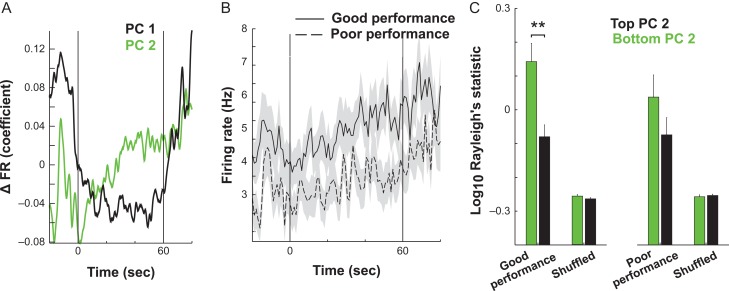Figure 5.
During good performance trials, a subpopulation of mPFC units transition to a reconfigured, theta-dominated state during delay. (A) The neural activity pattern captured by the first PC identified neurons that decrease firing during the delay (black line, −20–0 s and 60–80 s). In contrast, another activity pattern was identified by PC 2 that initially decline at the onset of delay (0 s) and then continuously increased until the second half of delay (~30 s). (B) Neurons were split by task performance, and firing rates were quantified in neurons that most heavily loaded onto PC 2, revealing a performance × time interaction. This indicates that increases in firing in PC 2-associated neurons are most robust on good performance trials. (C). Units that most heavily load onto PC 2 are more entrained to theta than those that load most weakly. This distinction is not evident in poor performance trials (main effect of PC, Tukey multiple-comparisons test, P < 0.01), thus indicating that the emergence of phase-locking in this neural population is important for task performance. Data in B and C are presented as mean ± SEM.

